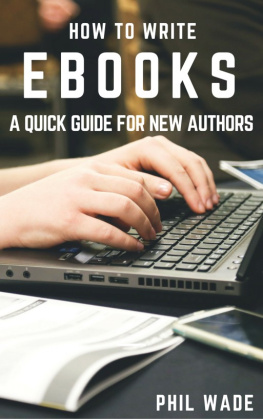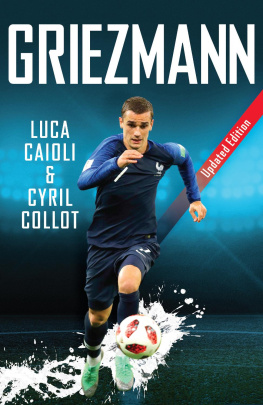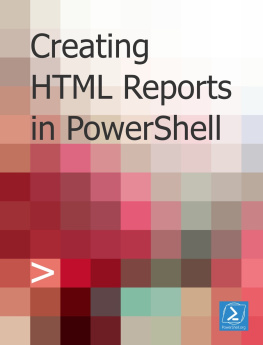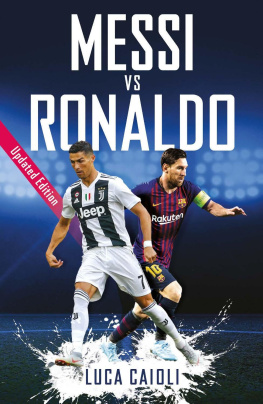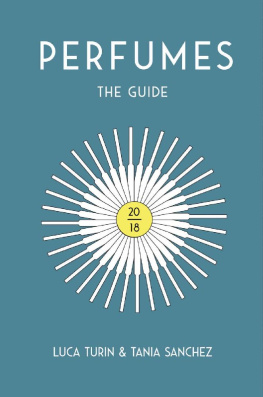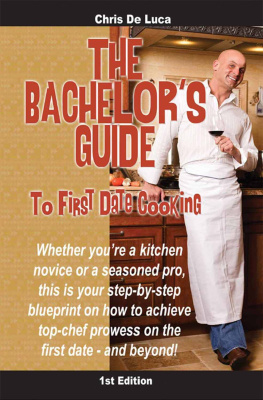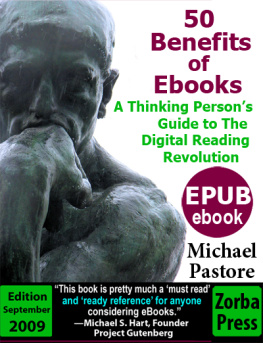Luca Calcinai - A quick guide to creating epub ebooks from printed books
Here you can read online Luca Calcinai - A quick guide to creating epub ebooks from printed books full text of the book (entire story) in english for free. Download pdf and epub, get meaning, cover and reviews about this ebook. year: 2019, publisher: Yo mama, genre: Home and family. Description of the work, (preface) as well as reviews are available. Best literature library LitArk.com created for fans of good reading and offers a wide selection of genres:
Romance novel
Science fiction
Adventure
Detective
Science
History
Home and family
Prose
Art
Politics
Computer
Non-fiction
Religion
Business
Children
Humor
Choose a favorite category and find really read worthwhile books. Enjoy immersion in the world of imagination, feel the emotions of the characters or learn something new for yourself, make an fascinating discovery.
- Book:A quick guide to creating epub ebooks from printed books
- Author:
- Publisher:Yo mama
- Genre:
- Year:2019
- Rating:5 / 5
- Favourites:Add to favourites
- Your mark:
- 100
- 1
- 2
- 3
- 4
- 5
A quick guide to creating epub ebooks from printed books: summary, description and annotation
We offer to read an annotation, description, summary or preface (depends on what the author of the book "A quick guide to creating epub ebooks from printed books" wrote himself). If you haven't found the necessary information about the book — write in the comments, we will try to find it.
A quick guide to creating epub ebooks from printed books — read online for free the complete book (whole text) full work
Below is the text of the book, divided by pages. System saving the place of the last page read, allows you to conveniently read the book "A quick guide to creating epub ebooks from printed books" online for free, without having to search again every time where you left off. Put a bookmark, and you can go to the page where you finished reading at any time.
Font size:
Interval:
Bookmark:
A QUICK GUIDE TO CREATING EPUBS FROM PRINTED BOOKS
In this guide I'll try to explain how to create an epub ebook starting from a printed book (or image files). Epubs are easily converted to kindle ebooks, and between the two formats they cover most (if not all) of the readers available.
I've been doing this for a few years and I've learned some tricks, which I want to share with you. I've also learned that there's quite many people who are doing the same thing: they're the ones to thank for most of the unofficial ebooks you find online. The job is relatively easy once you learn how to do it, and it can take as little as a few hours for a short, simple book and with a good scanner to dozens of hours for complicated ones with varying formatting, lots of footnotes, bad printing, a slow scanner and so on.
I have never made any money from it.
What you will need.
- A book. Shocking, I know. Though the guide works as well if you have someone else doing the scanning for you, and there are quite many image-pdf files floating around the web.
- A scanner. I've always used super-cheap ones, which do a decent job. You can spend as much money as you want on them. The fanciest ones are indeed much faster and don't require pushing the book against the glass (and thus potentially damaging it). However from my experience the time you save on scanning is really not much, when you compare it to the rest of the operations. The most time-consuming part is certainly not scanning the book. Professional copy machines, such as the ones used in schools or libraries, are also a faster option. If you can sacrifice the book you can cut the pages loose and the copy machine can scan it recto/verso.
- An OCR software (Optical Character Recognition). This is where the magic happens, and the images turn into text. I use Abby Finereader and it works fine. The Mac OS version doesn't have the same versatility of the Windows one, but despite that AFR remains probably the best OCR software available. Finding a cracked version shouldn't be too difficult.
- A text-editing software. I use Open Office. Others suggest using Atlantis, for which you don't need epub-conversion add-ons. For Mac OS there's Pages, a text-editor which creates very clean epub files.
- In case you use Open Office, you need a few add-ons: Pepito Cleaner https://pepitoweb.altervista.org/pepito_cleaner/index.php and Writer2Epub https://writer2epub.it/download/ .
- Epub-editing software: Sigil https://sigil-ebook.com/ and Calibre https://calibre-ebook.com/download (and yes, it's much better to have them both).
- A software for automatically clicking through repetitive tasks. This can be very useful, and at times indispensable. I use PTFB. You can torrent it with working crack here https://www.google.com/search?q=2D8739EA84E822D09A81BD5F3C01AAE8BA9DC266
- It is not a tool, strictly speaking, but https://www.mobileread.com/forums/ is the place to go for any doubts on the creation of ebooks. There's tons of very useful info, including an awesome thread just for regular expressions to use on Sigil, and from my experience the people there, besides being incredibly knowledgeable, are very friendly and always willing to help.
The books should be clean and without any signs, and especially without any underlinings or writing on the printed area. Erasing them before you start scanning might seem like a chore, but it will save you much time and headaches later on.
Scan at 300 dpi gray-scale.
If you use a normal, flat scanner, be sure to press the book hard against the surface of the scanner, so as to avoid distortion in the images. Also don't move it while scanning. If you happen to move it repeat the scanning. Finereader has an option for automatically keep scanning, without having to click again for each page.
Then select the language or languages you want and feed the images to the OCR. Scanning and reading can be done in one single step with Finereader.
If your book features some special characters which are not part of the default alphabet and which are repeated many times, you can train Finereader to recognize them (very common, for example, is some publishers using instead of ). Here is a short explanation on how to do it https://guides.nyu.edu/c.php?g=823477&p=5914850 .
If you don't scan using Finereader you get image files, most typically JPEGS or PDFs, which you can then feed to AFR.
This is one of the crucial parts. Once Finereader has finished digesting the book, you have to manually check each page for errors (and, very important, check that you did indeed scan all of the book's pages). Also, remove any white pages, because they can create problems later on.
Finereader assigns four area-types to the images it reads (text, table, image, barcode). At times the type it chooses might not be the best one for you, so check that too. Also check the image-areas cover the right area. Finereader, anyway, has quite many options you can fiddle around with.
The characters which the software is not sure of are highlighted (by default in light-blue), and the words that the spellcheck doesn't recognize are underlined in red. Arm yourself with some patience, and slowly go through all the pages. This is where a big part of the difference between a good and a bad ebook is made, as most of the errors do indeed show up here. The Mac version of AFR doesn't allow editing at this stage, so any modification has to be done at the next stage.
This is also where I set up parts of the formatting, using some personal code. I type in some specific strings before each part which I want to come up with special formatting in the final file. For example, I write XXX before all the titles that I will turn to main headings (H1 in html, such as chapter titles), YYY for sub-headings, +++ before the paragraphs that have a bigger margin above them, CIT and TIC before and after the quotations, if those paragraphs have a specific format (as they do in most cases), and so on. This makes all those parts easier to identify later in the process. Note that this step is not needed for headings that already start with a specific string (most typically chapter, part, or number+period). Make sure you choose unique strings, that are not found elsewhere in the book.
This is also where I set up the footnotes, if they're at the bottom of each page and not at the end of the book or of the chapter. For footnotes . AFR is not particularly good at managing footnotes on its own.
Once you've checked all the pages the worst is over, and I save the document. For reasons I haven't really understood, I think I've found it's better to save the document as HTML, and then to open the HTML file with Open Office and save it as ODT. Don't delete the Finereader document. It will be very useful as reference for the next steps. Only get rid of it once the book is done.
You can also save the file directly as epub, and skip step number 3. In that case you obviously need to do most of the editing from the epub file.
Once you got the ODT file, run Pepito Cleaner (which is basically a pre-compiled regex bundle) and check the major and most common imperfections: lines that start with a lowercase letter, lines that end without punctuation, dashes within the words, space before punctuation, and a few more. Then search, still from Pepito, for all the lines that start with XXX (from the third tab in Pepito search for ^XXX) and turn them into H1 headings; do the same for H2 and lower, if there's any. Then bulk-remove those markers (from Open Office's search and replace tool, checking the regex box just in case there's some instances of those strings within the text: search for ^XXX and replace with empty field).
Next pageFont size:
Interval:
Bookmark:
Similar books «A quick guide to creating epub ebooks from printed books»
Look at similar books to A quick guide to creating epub ebooks from printed books. We have selected literature similar in name and meaning in the hope of providing readers with more options to find new, interesting, not yet read works.
Discussion, reviews of the book A quick guide to creating epub ebooks from printed books and just readers' own opinions. Leave your comments, write what you think about the work, its meaning or the main characters. Specify what exactly you liked and what you didn't like, and why you think so.



